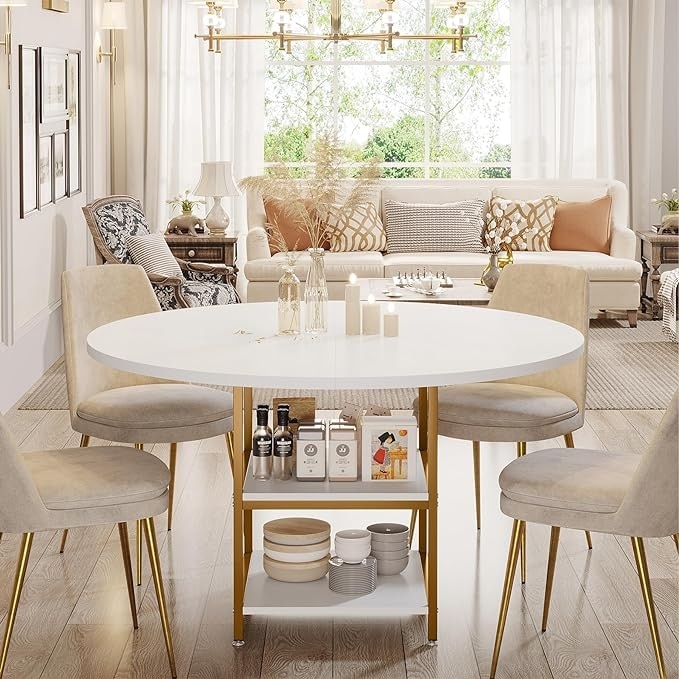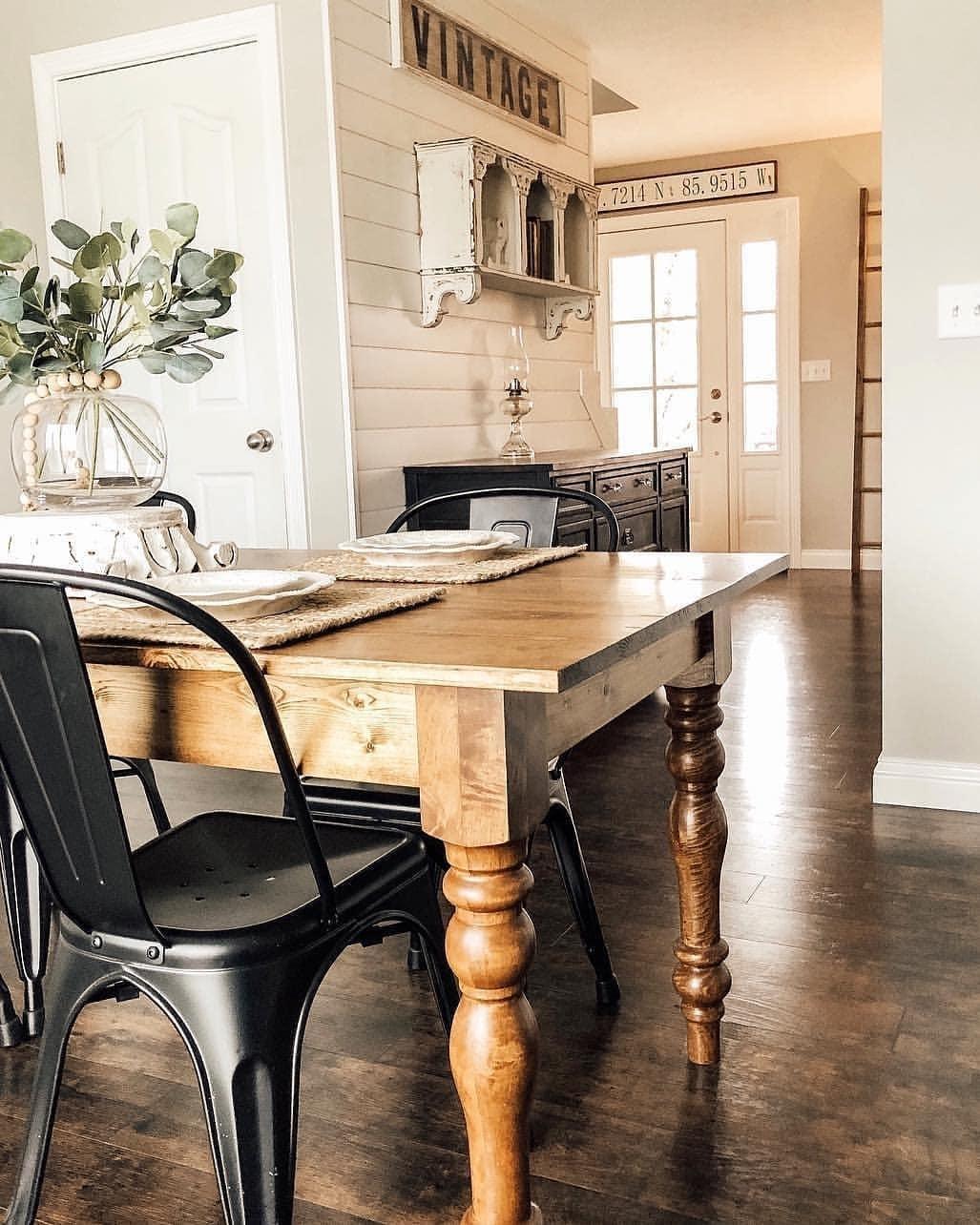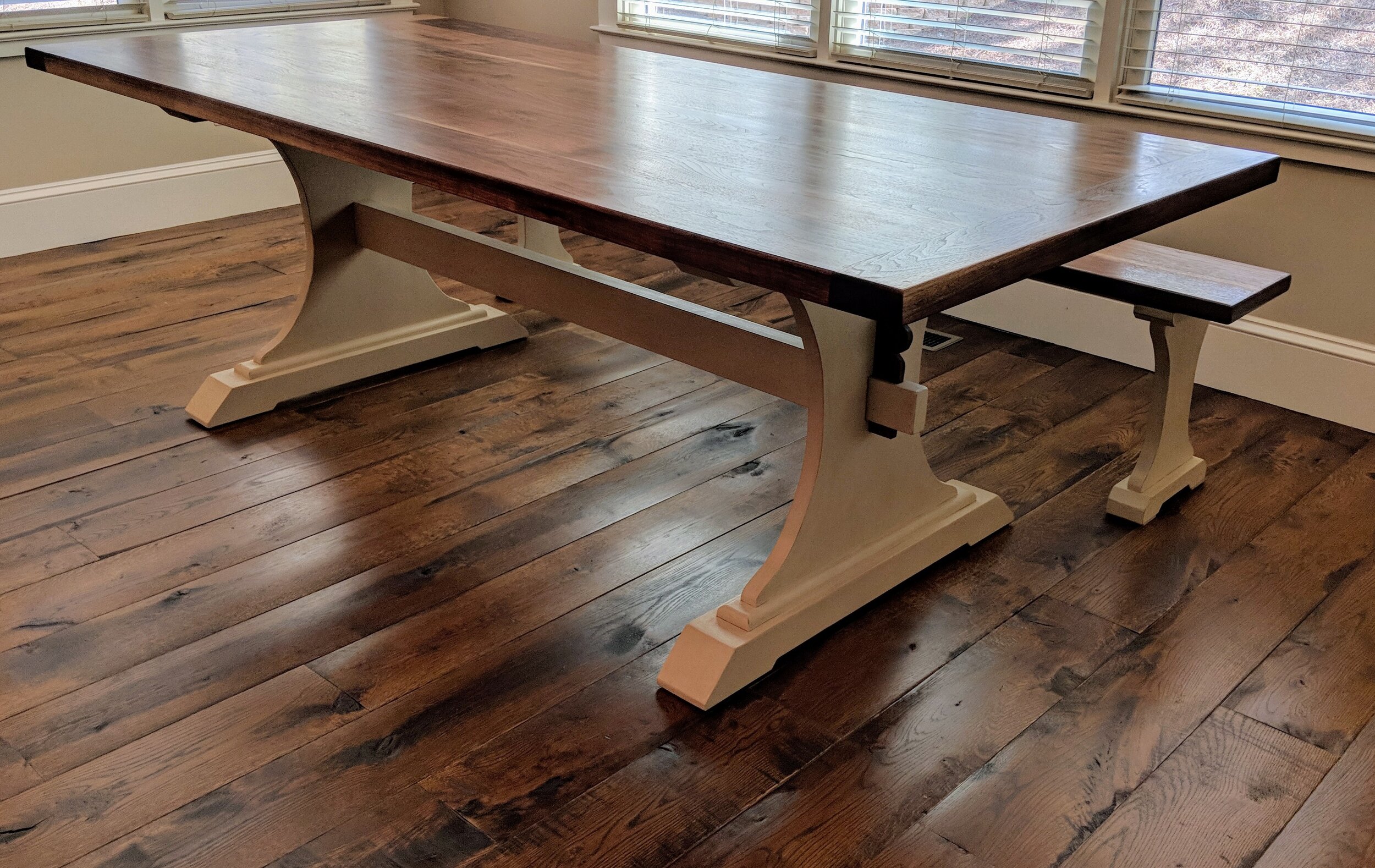The Impact of Dining Room Table Legs on Your Table's Overall Design
The Impact of Dining Room Table Legs on Your Table's Overall Design
Blog Article
Just How to Pick the Perfect Dining Room Table Legs for Your Home Décor
Picking the ideal dining space table legs is a nuanced procedure that calls for careful consideration of numerous components, including your space constraints, aesthetic preferences, and useful needs. The interaction in between products, dimensions, and styles can dramatically affect the atmosphere of your eating area, making it essential to approach this choice carefully.
Assess Your Eating Room
Analyzing your eating room is important for selecting the right table legs that match both aesthetic appeals and performance. Begin by determining the measurements of your dining area, consisting of ceiling elevation, flooring space, and closeness to various other furnishings. This details will assist identify the ideal dimension and height of your table, which straight affects the option of table legs.
Next, think about the style and design of your dining space. An open-concept layout might profit from table legs that supply aesthetic lightness, such as slender metal or acrylic alternatives. Conversely, an extra conventional setup might require sturdy wood legs that supply a sense of durability.
Evaluate the existing shade combination and materials in your eating area. Integrating the table legs with these aspects develops a natural look that boosts the general design.
Ultimately, a complete analysis of your dining space will assist you in making an informed choice, guaranteeing that your table legs not only enhance the visual appeal yet also serve practical functions.
Consider Your Design Preferences
When choosing dining-room table legs, it is vital to review your personal style choices, as they significantly influence the general visual of your eating space. Your choice of table legs can either enhance or comparison with existing decor, making it essential to straighten them with your preferred interior decoration style.
If your home leans towards a modern-day visual, take into consideration streamlined steel or minimal wooden legs that give a clean, minimalist appearance. For a much more typical technique, ornate wooden legs with complex makings can include a touch of beauty and refinement. Industrial styles profit from durable, basic materials such as redeemed timber and steel mixes, mirroring a tough appeal.
In addition, farmhouse and rustic styles frequently favor tough, chunky legs that stimulate a feeling of heat and convenience. Alternatively, if your decoration is diverse, you might pick non-traditional forms or a mix of products to create visual interest.

Evaluate Material Options
The selection of product for eating space table legs plays a crucial role in both resilience and visual appeal. Typical products consist of wood, steel, and composite choices, each offering unique attributes that can affect the total look and longevity of your table.
Wood is a traditional option, known for its warmth and adaptability. Woods like oak and walnut offer remarkable strength and can be ended up in different discolorations to match any kind of decoration. Softwoods like yearn are much more vulnerable to scrapes and damages, making them much less perfect for high-traffic locations.
Steel legs, frequently crafted from steel or aluminum, show modernity and industrial beauty. They are resistant and highly durable to put on, making them appropriate for families with youngsters or regular celebrations (dining room table legs). Additionally, steel can be completed in different colors, boosting the customization possibilities
Composite products, such as MDF or laminate, offer affordability and varied designs. While usually much less resilient than strong timber or steel, they can still give an elegant appearance and are typically very easy to maintain.
Inevitably, the product you pick need to straighten with your lifestyle, visual choices, and the degree of usage your table will certainly experience.
Determine Height and Dimension
Choosing the ideal elevation and dimension for your eating room table is crucial for both functionality and convenience. The standard height for eating tables usually ranges from 28 to 30 inches, allowing sufficient legroom for the majority of individuals when seated. It is essential to think about the measurements of your eating area and the kinds of chairs you intend to utilize.

Moreover, take into consideration the percentages of your dining-room. A larger table in a sizable location can produce a grand ambiance, while a smaller table functions well in even more intimate setups. Inevitably, the right elevation and dimension will certainly integrate with your general style and boost the dining experience for you and your visitors.
Explore Customization Opportunities

Furthermore, the layout of the legs can be customized to fit numerous designs, such as rustic, modern-day, or commercial. Tapered legs can stimulate a mid-century contemporary feeling, while beefy, block-style legs might resonate with typical or farmhouse decor.
Home owners can also check out color surfaces, from natural timber discolorations to paint, enabling them to match or contrast with the tabletop and bordering decor.
Moreover, leg elevation can be adapted to fit specific seating setups or individual preferences, enhancing both comfort and functionality.
Finally, special decorations, such as makings or ornamental brackets, can additionally customize the table legs, making the dining experience not just a declaration however a meal piece in the home. By considering these modification choices, home owners can develop a dining-room table that truly mirrors their uniqueness.
Final Thought
Selecting the ideal eating space table legs requires mindful consideration of numerous factors, including the measurements of the eating space, design preferences, product sturdiness, and preferred height. Modification choices further enhance the ability to achieve a natural visual that complements the general decor. By systematically reviewing these components, house owners can ensure that the chosen table legs not just fulfill useful requirements but additionally contribute positively to the dining experience and setting of the home.
Choosing the suitable eating space table legs is a nuanced procedure that requires cautious consideration of numerous components, including your area restrictions, visual preferences, navigate here and functional demands.Assessing your dining space is critical for picking the right table legs that enhance visite site both visual appeals and performance.When establishing size, determine the area where the table will be put to ensure it fits easily, enabling for at least 36 inches of clearance around the table for very easy movement. A bigger table in a roomy area can create a grand ambiance, while a smaller table works well in more intimate setups.Selecting the ideal eating area table legs calls for careful factor to consider of numerous variables, including the measurements of the eating room, design choices, product durability, and desired elevation.
Report this page